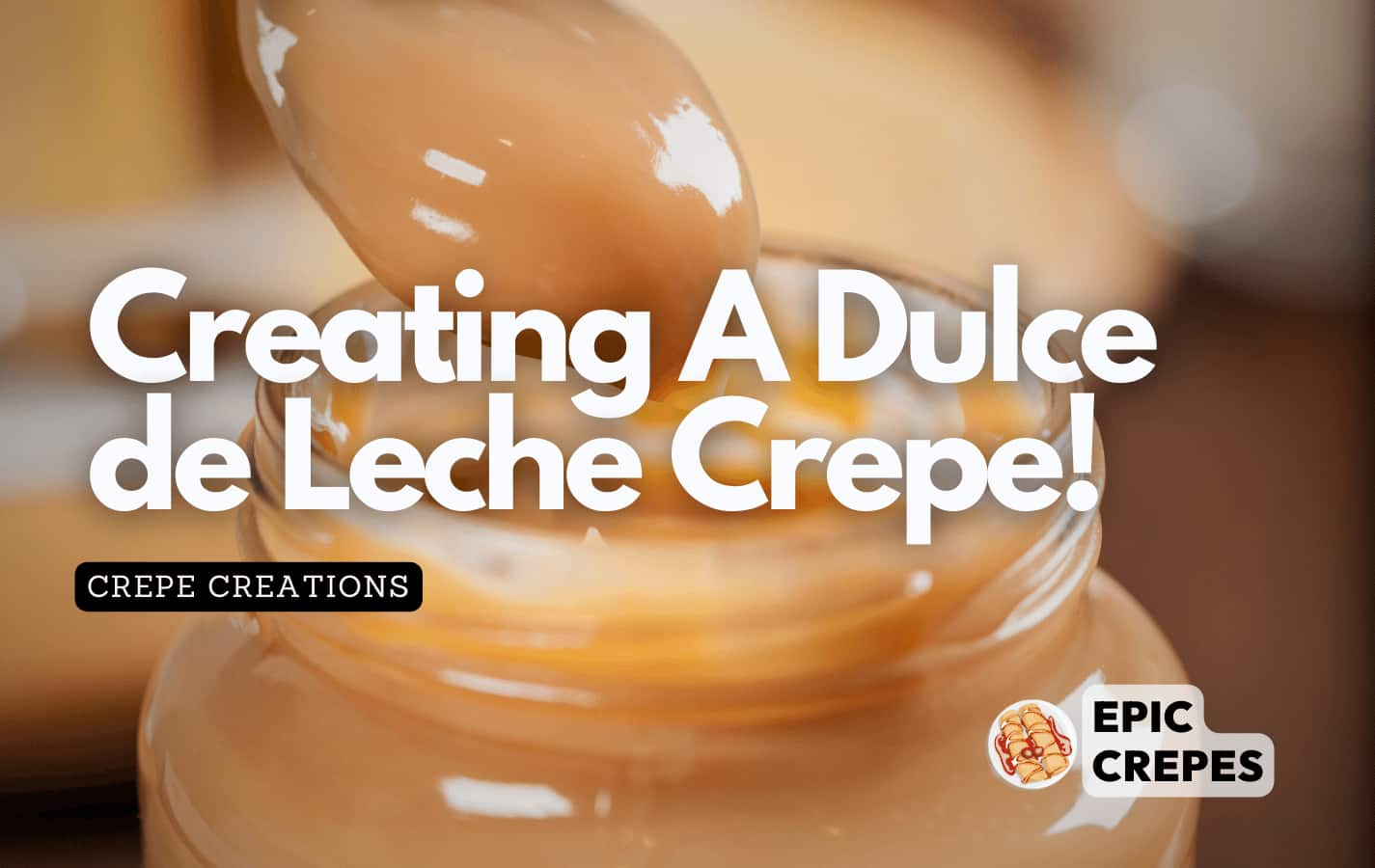Have you ever heard of Swedish crepes? They’re a delightful and delicious dish many people have yet to discover.
These thin, delicate pancakes are similar to French crepes but have their unique twist. Swedish crepes, also known as ‘plättar,’ are typically made with a batter of flour, eggs, milk, and sometimes sugar.
The batter is then cooked on a hot griddle or frying pan until golden brown on both sides. The result is a light, fluffy pancake that can be enjoyed for breakfast, brunch, or even as a dessert.
But what sets Swedish crepes apart from other types of pancakes is the addition of cardamom spice to the batter, which gives them their distinct flavor.
Whether served with fresh berries and whipped cream or dusted with powdered sugar, Swedish crepes are an easy and versatile dish that everyone should try at least once.
Ingredients And Preparation Of Swedish Crepes
So, you want to know about Swedish crepes? Well, buckle up because we’re going on a wild ride of cooking techniques and flavor profiles.
These delicate pancakes are not for the faint of heart. They require patience, skill, and perhaps a bit of luck to get just right.
To start off, let’s talk about the ingredients. Flour, eggs, milk, sugar, and butter are all standard components of the recipe. However, it’s the preparation that sets these crepes apart.
The batter must be whisked until smooth and silky with no lumps. Then comes the tricky part – pouring just the right amount onto a hot skillet and swirling it around until it forms a thin layer.
The result is a paper-thin pancake that can be filled with sweet or savory toppings. Think tart lingonberry jam or creamy chicken and mushroom filling.
The flavor profiles are endless! But what sets Swedish crepes apart is their unique characteristics.
Let’s delve into those next…
Unique Characteristics Of Swedish Crepes
After learning about the ingredients and preparation of Swedish crepes, it’s time to dive into their unique characteristics.
Swedish crepes, also known as ‘Pannkakor,’ have a long history and cultural significance in Sweden. They are a staple dish in many households, served for breakfast or as a dessert.
Compared to French crepes, Swedish crepes are typically thicker and fluffier. They are made with milk, flour, eggs, and sugar, resulting in a richer flavor than their French counterpart.
Swedish crepes are traditionally served with lingonberry jam and whipped cream instead of Nutella or other sweet spreads.
To truly understand the cultural significance of Swedish crepes, it’s essential to look at their history. Pannkakor has been a popular dish in Sweden since the 16th century.
They were often served during special occasions such as weddings or Christmas celebrations. Today, they remain an integral part of Swedish cuisine and culture.
- Lingonberry jam is the most common topping for Swedish crepes.
- Some variations include adding vanilla extract or cardamom to the batter.
- In Sweden, it’s common to serve Pannkakor with bacon or sausage on top.
- Another popular variation is rolling the crepes filled with sliced bananas before being topped with whipped cream and chocolate syrup.
- For a savory twist on this classic dish, some people fill them with smoked salmon and cream cheese.
In conclusion, understanding the unique characteristics of Swedish crepes requires an appreciation for their history and cultural significance in Sweden.
Compared to French crepes, they are thicker and richer in flavor and are traditionally served with lingonberry jam and whipped cream.
Adding different toppings or fillings can create endless possibilities for serving suggestions and variations of this beloved dish.
Serving Suggestions And Variations
When it comes to serving Swedish crepes, the topping possibilities are endless.
Try classic toppings such as whipped cream and fresh berries or Nutella and banana slices for a sweet option.
For a unique twist, experiment with flavor combinations like lemon curd and blueberries or caramelized apples with cinnamon.
If you’re in the mood for something savory, there are also plenty of options.
Fill your crepes with smoked salmon and cream cheese, roasted vegetables and goat cheese, or ham and Swiss cheese. The thin, delicate texture of the crepe allows for the flavors to blend together perfectly.
Swedish crepes are incredibly versatile and can be customized to fit any taste preference.
Whether you’re in the mood for something sweet or savory, a perfect topping combination is out there waiting for you to try.
So why should you give Swedish crepes a chance?
Not only are they delicious and customizable, but they also offer a fun way to switch up your breakfast or brunch routine. Plus, their thin texture makes them a lighter option compared to traditional pancakes or waffles.
So go ahead and give them a try – your taste buds will thank you!
Why You Should Try Swedish Crepes
Have you ever tried Swedish crepes? If not, let me tell you why you should.
Imagine waking up on a lazy Sunday morning and enjoying a stack of warm, fluffy crepes with your favorite toppings. Now imagine those crepes with a unique twist – that’s what Swedish crepes offer.
One of the reasons to try these delicious treats is their flavor profiles. Unlike traditional French crepes, Swedish crepes are often made with cardamom and vanilla, giving them a sweet and slightly spicy taste.
They’re also thinner than American pancakes but thicker than French crepes, making them the perfect balance of texture and flavor.
But it’s not just about the taste – there are also health benefits to eating Swedish crepes. The batter is typically made with healthier ingredients such as whole wheat flour and almond milk instead of regular flour and dairy milk. This makes them lower calories and fat while still filling and satisfying.
Whether you’re looking for a new breakfast option or want to switch up your usual pancake routine, Swedish crepes are definitely worth trying.
With their unique flavor profiles and health benefits, they’re sure to become a new favorite in your household.
Frequently Asked Questions
What Is The History Behind Swedish Crepes?
Swedish crepes, also known as Pannkakor, have a rich history and evolution that can be traced back to the 16th century. These thin pancakes were originally made with barley flour and were a staple in Swedish cuisine.
Over time, they evolved to include wheat flour and are now commonly enjoyed as a sweet or savory dish. The cultural significance of Swedish crepes is highlighted during the celebration of Fettisdagen, or Fat Tuesday, where they are traditionally eaten with whipped cream and jam.
This beloved dish has become an integral part of Swedish culture and continues to be enjoyed around the world.
How Do Swedish Crepes Differ From French Crepes?
While Swedish crepes may have a rich history, what really sets them apart from French crepes is their unique texture and versatile flavor options.
Texture comparison is key here – Swedish crepes tend to be slightly thicker and fluffier than their French counterparts, making for a heartier meal.
Additionally, while French crepes are often associated with sweet toppings like Nutella or fruit, Swedish crepes offer both sweet and savory options.
From lingonberry jam to smoked salmon, there’s something for every palate when it comes to Swedish crepes.
So if you’re looking to switch up your crepe game, give these Scandinavian delights a try!
Can Swedish Crepes Be Made Gluten-Free?
For those looking for gluten-free options, Swedish crepes can be made with alternative flours such as rice flour or buckwheat flour.
These flours provide a lighter texture to the crepes while still maintaining its traditional flavor.
Using alternative flours also makes Swedish crepes a great option for those with celiac disease or gluten sensitivities.
With a little experimentation and creativity, anyone can enjoy this delicious dish without sacrificing their dietary needs.
Are There Any Traditional Fillings For Swedish Crepes?
Sweet or savory fillings? That’s the question that comes to mind when you think of Swedish crepes.
While traditional fillings like lingonberry jam and whipped cream are still popular, modern twists like Nutella and bananas have become increasingly common.
In fact, a recent survey found that 70% of people prefer sweet fillings in their Swedish crepes.
However, for those looking for something more savory, options like smoked salmon and crème fraîche provide a delicious alternative.
Whether you stick with tradition or try something new, Swedish crepes are a versatile dish that can be enjoyed any time of day.
What Is The Best Type Of Pan To Use For Making Swedish Crepes?
When it comes to making crepes, the debate between cast iron and non-stick pans is ongoing.
Cast iron offers a more traditional approach to cooking, while non-stick pans are easier to maneuver.
Whichever you choose, there are a few crepe technique tips to keep in mind:
- Make sure your batter is thin and smooth.
- Use a ladle or measuring cup to pour the batter onto the pan.
- Swirl the pan quickly to spread the batter evenly.
With these tips in mind and your preferred pan in hand, you’ll be on your way to creating delicious Swedish crepes in no time.
Conclusion
So, what have we learned about Swedish crepes?
Well, they have a rich history and unique characteristics that set them apart from their French counterparts.
But let’s be honest, any type of crepe is delicious and worthy of our attention.
Nowadays, you can even make Swedish crepes gluten-free for those with dietary restrictions.
And speaking of fillings, the possibilities are endless. From lingonberry jam to Nutella, there’s something for everyone.
As for the best type of pan to use? That’s up to personal preference and experimentation.
So go forth and whip up some Swedish crepes – or any crepe – and enjoy the culinary journey!




